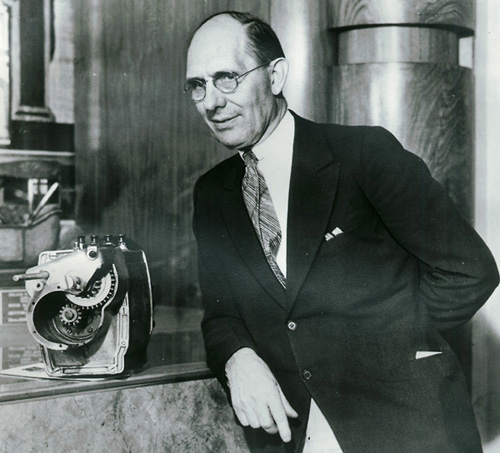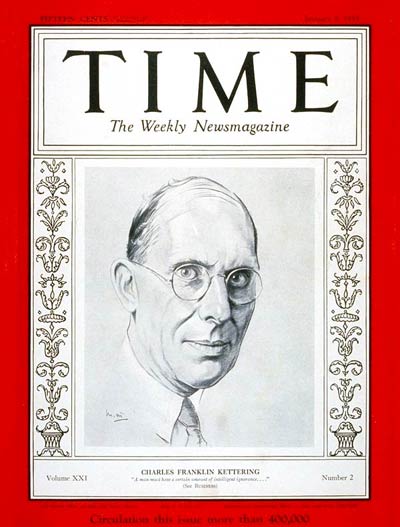<Back to Index>
- Inventor Charles Franklin Kettering, 1876
- Composer Edvin Kallstenius, 1881
- Président de la République Française Albert François Lebrun, 1871
PAGE SPONSOR
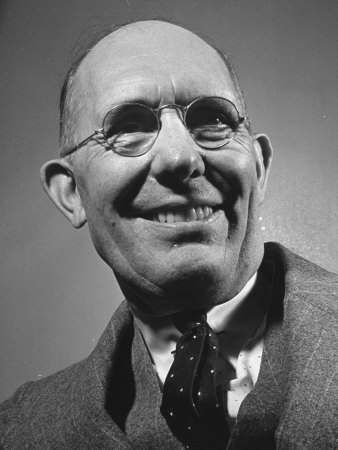
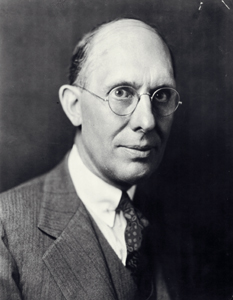
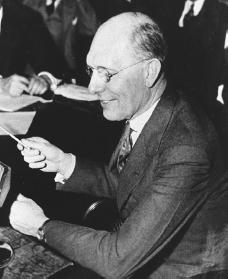
Charles Franklin Kettering (August 29, 1876 – November 24 or November 25, 1958) was an American inventor, engineer, businessman, and the holder of 140 patents. He was a founder of Delco, and was head of research for General Motors for 27 years from 1920 to 1947. Among his most widely used automotive inventions were the electrical starting motor and leaded gasoline. In association with the DuPont Chemical Company, he was also responsible for the invention of Freon refrigerant for refrigeration and air conditioning systems, as well as for the development of Duco lacquers and enamels, the first practical colored paints for mass produced automobiles. While working with the Dayton - Wright Company he developed the "Bug" aerial torpedo, considered the world's first aerial missile. He led the advancement of practical, lightweight two - stroke diesel engines, revolutionizing the locomotive and heavy equipment industries. In 1927, he founded the Kettering Foundation, a non-partisan research foundation.
Charles was born in Loudonville, Ohio, USA, the fourth of five children of Jacob Kettering and Martha Hunter Kettering. Poor eyesight hindered his progress as a student, but he attended The College of Wooster and in 1904 earned an electrical engineering degree from Ohio State University. He was a member of the Delta Upsilon Fraternity.
Kettering was a researcher first for National Cash Register, and then for the U.S. automotive industry, founding the Dayton Engineering Laboratories Company (shortened to DELCO) with Edward A. Deeds and Harold E. Talbott. Delco was eventually sold to General Motors, where it became the foundation for the General Motors Research Corporation and Delco Electronics. Kettering became vice president of General Motors Research Corporation in 1920 and held the position for 27 years.
With Henry Leland, he developed a self - starter for the Cadillac which won a Dewar Trophy as a result in 1913.
Between 1918 and 1923, he led the research and development at GM's Dayton research laboratories to commercialize air - cooled engines for cars and trucks. They used fans forcing air across copper fins for heat dissipation. The commercialization, attempted between 1921 and 1923, was unsuccessful due to a combination of factors, nontechnical and technical. Air - cooled engines have had commercial success before and since, in various fields (small engines, aircraft, cars), but the historical moment of GM's "copper - cooled" automotive engine was inauspicious.
Kettering was later heavily involved in the research for new diesel engines, including two - stroke designs and lightweight designs. This research was instrumental in the development of diesel locomotives, the first of which was a 600 - horsepower unit that powered the "Pioneer Zephyr" for the Chicago, Burlington and Quincy Railroad. The Electro - Motive series of corporations, including its incarnation as a GM division, became a principal builder of locomotives. The work of Kettering and colleagues with diesels also led to the Detroit Diesel Series 71 family of two - stroke diesel engines for trucks and heavy equipment. In an interview about his diesel research, he was asked if the development of diesel locomotive engines presented any unusual problems. His classic response was, "Let it suffice to say that I don't recall having any trouble with the 'dipstick'".
Kettering
and Deeds had a lifelong business, professional and personal
relationship. In 1914, recognizing that Dayton was among the leading
industrial cities in the US due to the skilled engineers and technicians
in the city, they founded the Engineers Club of Dayton and the Foreman’s Club of Dayton which later on became the National Management Association. After his death, his body lay in honor at the Engineers Club prior to interment in the mausoleum at Woodland Cemetery, Dayton, Ohio. Kettering held 140 U.S. patents. He invented the all - electric starting, ignition, and lighting system for automobiles. Electric starters replaced crank (manual) starting of automobiles. First incorporated in the 1912 Cadillac,
all - electric starting aided in the growth of the US auto industry by
making the automobile easy for anyone to start. Other patents included a
portable lighting system, Freon, and an incubator for premature infants. His engine - driven generator was combined with storage batteries to form a "Delco Plant", providing an electrical power for farmsteads and other locations far from the electrical power grid. In 1918 Kettering designed the "aerial torpedo", nicknamed the Kettering Bug. The 300 lb paper - mache missile
had 12 foot cardboard wings, and a 40 hp engine. It could carry 300 lbs
of high explosives at 50 mph, and cost $400. The "Bug" is considered
the first aerial missile, and lessons learned from the "Bug" led to
development of the first guided missiles, as well as radio - controlled
drones. He developed the idea of Duco paint and ethyl gasoline. He helped develop diesel engines and ways to harness solar energy. He was a pioneer in the application of magnetism to medical diagnostic techniques. His inventions, especially the electric automobile starter, made him wealthy. In 1945, he helped found what became the Memorial Sloan - Kettering Cancer Center, based on the premise that American industrial research techniques could be applied to cancer research. He was awarded the Franklin Medal in 1936. On January 1, 1998, the former General Motors Institute changed its name to Kettering University to honor Kettering as a founder. Kettering
married Olive Williams of Ashland, Ohio, in 1905. Their only child,
Eugene Williams Kettering, was born on April 20, 1908. He built a house, "Ridgeleigh Terrace", in 1914. According to local sources, this house was the first in the United States to have electric air conditioning. Ridgeleigh
Terrace was the home of his son, Eugene Kettering, until his death.
Eugene's wife, Virginia Kettering, lived in the house for many years,
restoring and redecorating it. In 1994, the house was seriously damaged
in a fire, but Virginia Kettering, then in her 80s, rebuilt it according
to the original blueprints. She continued to live there until she moved to a suite in the nearby Kettering Medical Center when in her 90s. In 1998, GMI Engineering and Management Institute (formerly General Motors Institute), of Flint, Michigan, changed its name to Kettering University in honor of Kettering. His ideals, prowess, and belief in co-operative education continue there. Kettering is also remembered through the Memorial Sloan - Kettering Cancer Center, a cancer research and treatment center in New York City, and through the Kettering Health Network, which includes several hospitals and medical center campuses as well as the Kettering College of Medical Arts in Kettering, Ohio. The city of Kettering, Ohio, a suburb of Dayton, was named after him when it was incorporated in 1955. The former U.S. Army Air Service testing field, McCook Field, is now a Dayton park called Kettering Field. Several
U.S. public schools are named after him: Charles F. Kettering Sr. High
School in Waterford, Michigan, Charles F. Kettering Elementary School
in Ypsilanti, Michigan, Charles F. Kettering Elementary School in Long
Beach, California, Kettering Fairmont High School in Kettering, Ohio,
Charles F. Kettering Sr. High School in Detroit, Michigan. The
Department of Environmental Health at the University of Cincinnati is
housed in the Kettering Lab. The engineering building at the University
of Dayton is called Kettering Lab. The endowed Olive Williams Kettering
Chair of The College of Wooster Department of Music is named in honor of his wife. The Kettering Science center on the Ashland University campus in Ohio is named for him.
